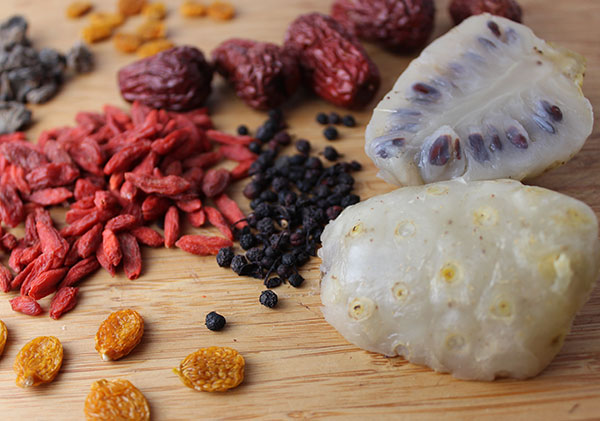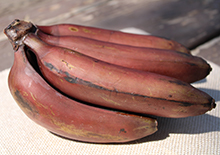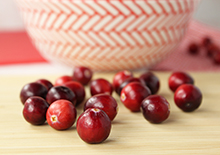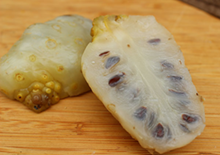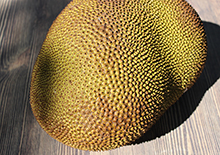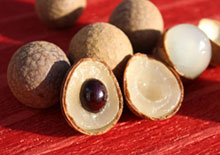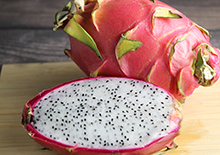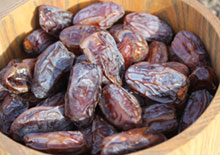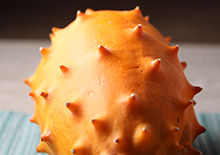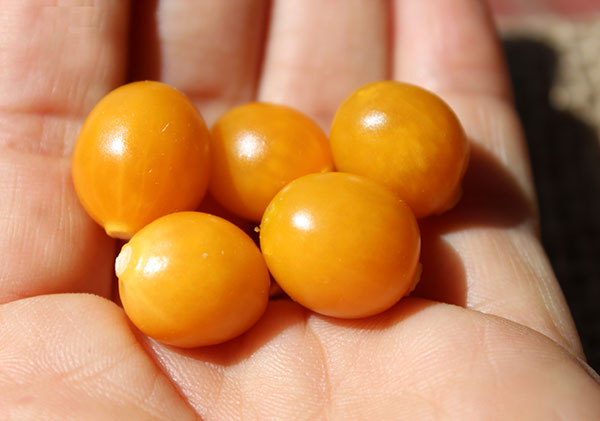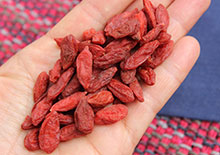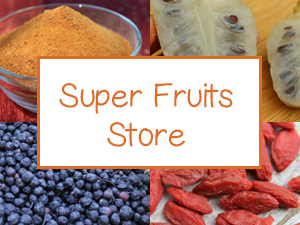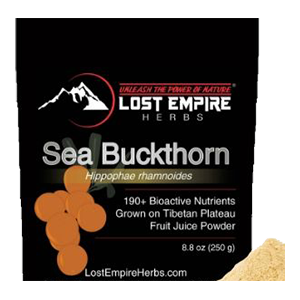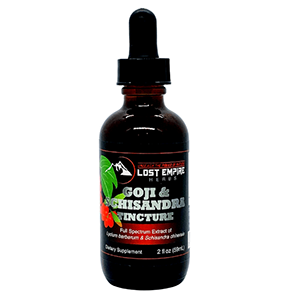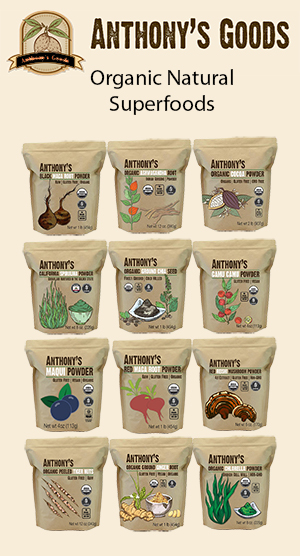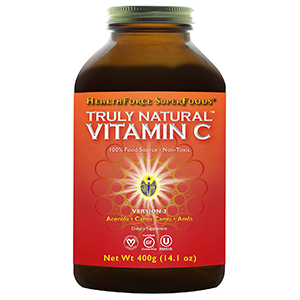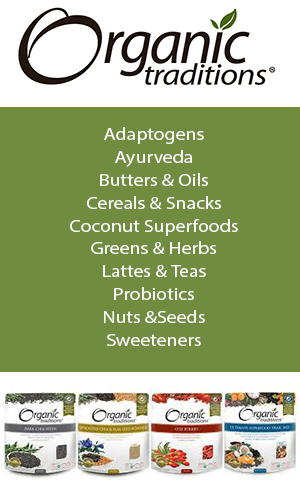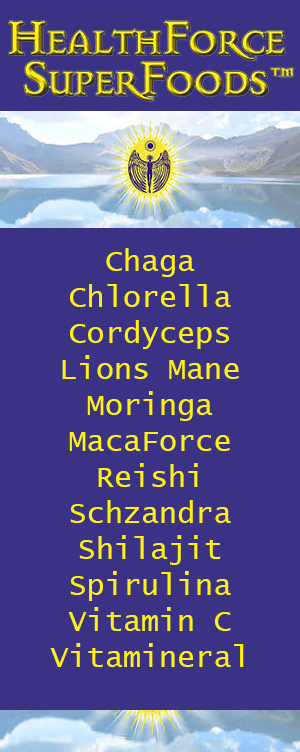- Home
- Super Fruits
- List of Common Fruits
Top 10 List of Common Fruits and Their Nutritional Benefits
1) Apples
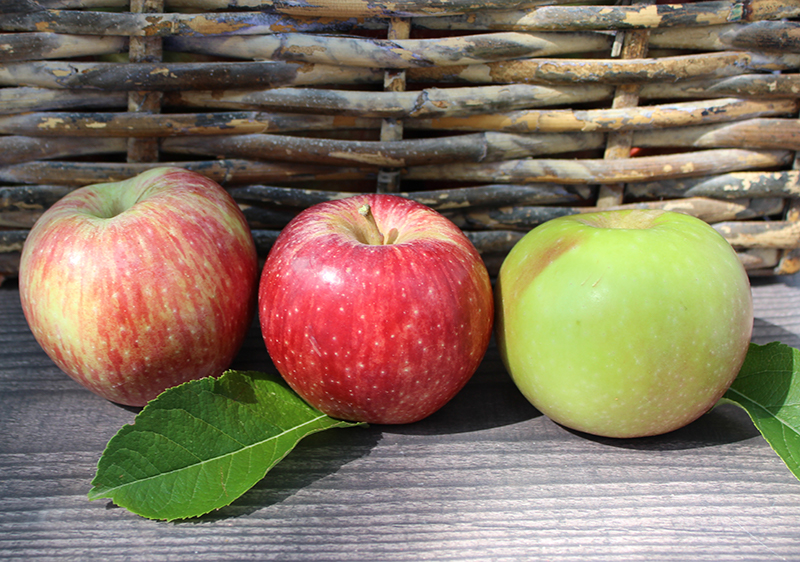
Probably one of the world's most popular fruit varieties, raw apples are sources of key nutrients.
First, they are top on the list of common fruits that are high in PECTIN. One of the main reasons for the phrase "An apple a day keeps the doctor away"?
Pectin is a type of polysaccharide and soluble fiber that normalizes bowel regularity and acts as a prebiotic, providing food for beneficial bacteria in the gut microbiome.
Next, apples eaten with the skin are good sources of antioxidant
polyphenols, especially QUERCETIN which helps foster anti-inflammatory
and immune functions. (*)
Some science
has identified
that both the polyphenol and pectin fiber content in eating two apples a day can likewise reduce
the absorption of cholesterol and improve vascular health.
According to nutritional data, one medium size apple with the peel included may contain about 17% the Daily Value for dietary fiber, 14% for vitamin C, 5% for vitamin K, 6% for potassium and trace amounts of other vitamins and minerals.
2) Blueberries
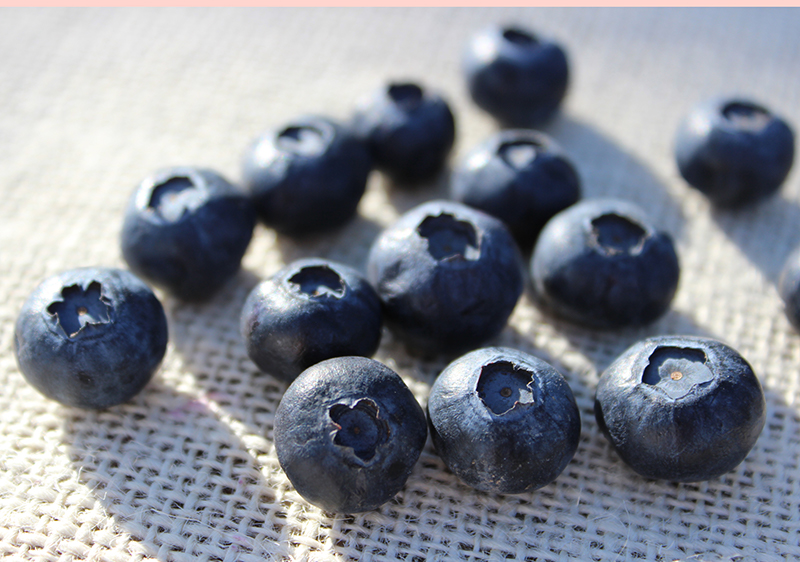
Blueberries and their dark blue skin are very high in compounds known as ANTHOCYANINS valued for their support to cognitive, cardiovascular, immune and digestive functions.
Anthocyanins act as powerful ANTIOXIDANTS offering a protective influence helpful for neutralizing harmful "free radicals" that contribute to aging and cellular mutations.
According to some research, daily blueberry consumption of about 1/3 C (less than about 50 mg of anthocyanins) is generally considered beneficial for mitigating the risk of common diseases.
Like cranberries, blueberries also contain the proanthocyanidins known to benefit the urinary tract.
While either wild or cultivated blueberries can be a great addition to the diet, the wild variety is known to be slightly higher in antioxidants. This is because wild are smaller you're also going to get a greater ratio of skin to fleshy pulp. And that's where most of these all-important nutrients are found.
Blueberries are good sources of VITAMIN C and VITAMIN K with a cup serving averaging 24% the DV for vitamin C and 36% the DV for vitamin K. They are full of FIBER and many B complex vitamins, copper and manganese along with small amounts of other minerals.
3) Pineapple
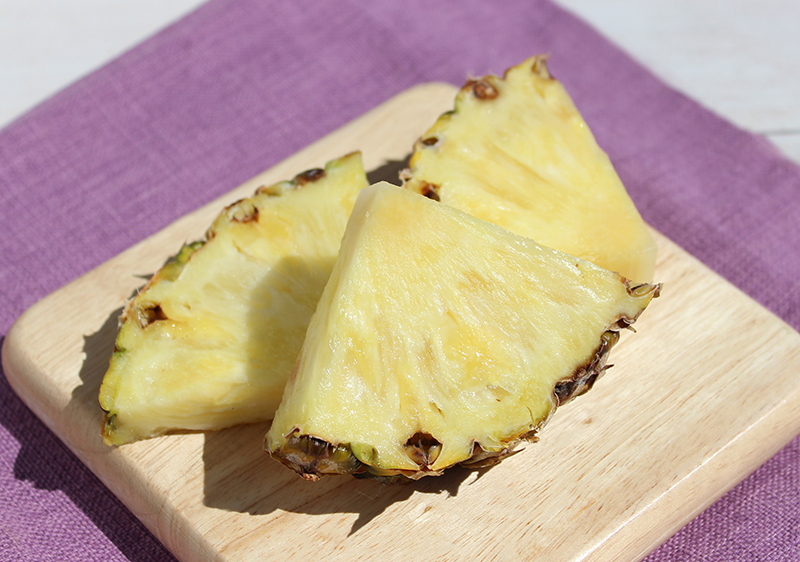
From a nutritional perspective, pineapple is most well-known for its high amounts of BROMELAIN, a "protein-digesting" proteolytic enzyme.
While it is present in all parts of the pineapple, the stem is the primary part utilized to make bromelain dietary extracts.
The commonly researched benefits of bromelain are its anti-inflammatory influences, especially for the joints, muscles and sinuses. It is also used to support protein digestion and nutrient absorption.
In one review, drinking pineapple juice was reported to be useful for "metabolizing undigested food remnants in the stomach."
Peeled and sliced stringy ripe pineapple is high in FIBER and helpful for increasing one's daily recommended intake. Data shows that one cup (165g) of pineapple chunks can be about 2.3 grams or 8% of the Daily Value, based on an adult 2,000-calorie adult diet.
As far as vitamins and minerals go, raw pineapple is very high in VITAMIN C as well as the mineral MANGANESE. The fruit also is composed of some B vitamins, with thiamin, B6 and folate being the highest, according to nutrition info.

4) Figs
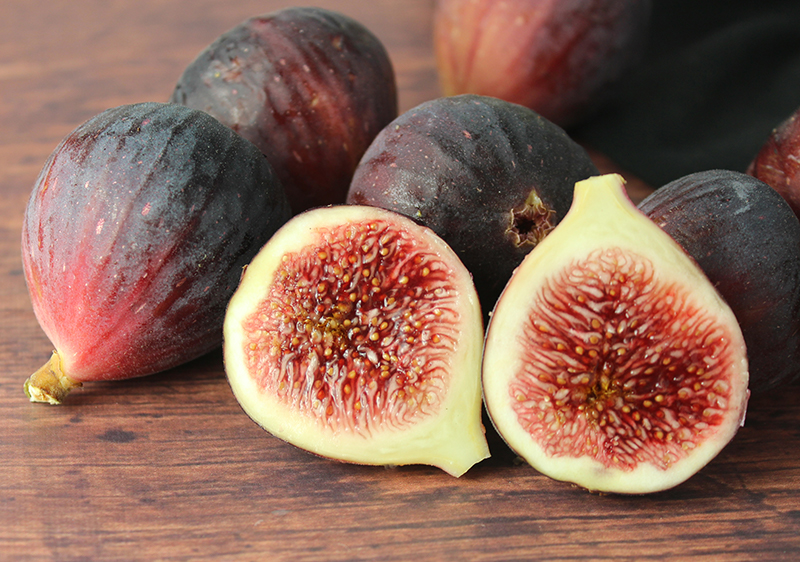
The seedy sensual fibrous pulp and thick outer skin of the fig fruit is also a VERY good source of dietary FIBER.
Just one large fresh fig provides approximately 1.9 grams of dietary fiber or 7% of the recommended daily value. So, with the typically serving size of between 3-4 figs, you're getting about 21-28% the DV for total fiber.
This goes along with figs well-known benefits for encouraging healthy bowel functions and preventing stool dryness. Along with prunes and dates, they are an often recommended food for constipated conditions useful as a natural laxative, especially when eaten alone first thing in the morning.
Figs are also available as a dried fruit that can be eaten as a snack food or soaked to make "fig paste", common in many dessert recipes.
Figs are also sources of polyphenolic ANTIOXIDANTS as well as Ficus carica POLYSACCHARIDES, specific to the fig species. These polysaccharides have been shown to activate immune responses in some research.
In other reports analyzing six different commercial fig varieties, the dark-skinned Mission Fig showed the "highest antioxidant capacity."
A serving size of 3 fig fruits, according to nutrition data, are a good source of minerals and vitamins like potassium, copper, magnesium, calcium, iron, B6, B5, beta-carotene and vitamin C.
5) Banana
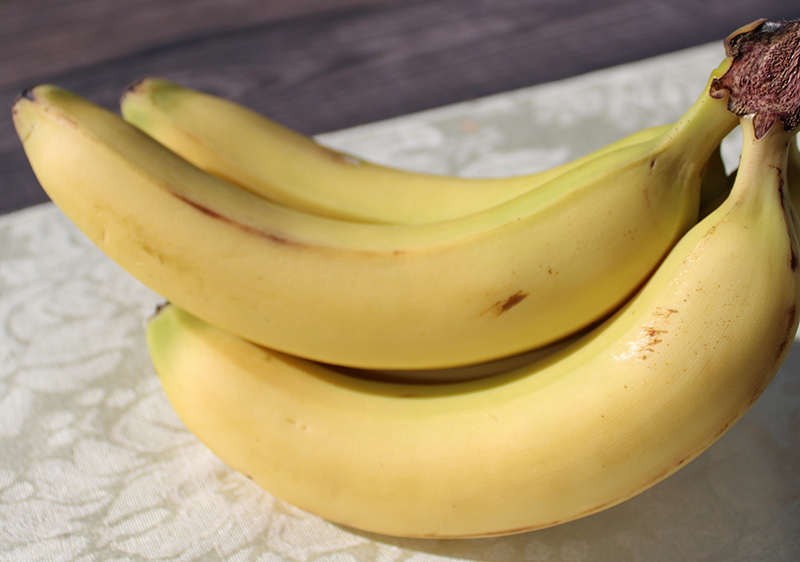
Yellow bananas are good sources of manganese, vitamin C and vitamin B6 as well as small amounts of magnesium and other trace nutrients.
One of the most popularized minerals, however, in a ripe banana is POTASSIUM. Yes it's true, compared to most others on this list of common fruits, bananas have the mineral potassium in slightly higher quantities.
It is estimated that one ripe banana contains approximately 375 mg of potassium or the equivalent to 8% the DV.
Bananas are high in fiber as well as other carbohydrates, like sugars and some starch. One medium yellow banana has about 26 grams of carbohydrates and 2 grams of fiber.
Bananas can be a healthier option over refined sugary sweet snacks as well as an energizing food for workouts or exercise regimens. They're better eaten in moderation within a well-balanced diet because of their high amounts of sugar.
6) Cherries
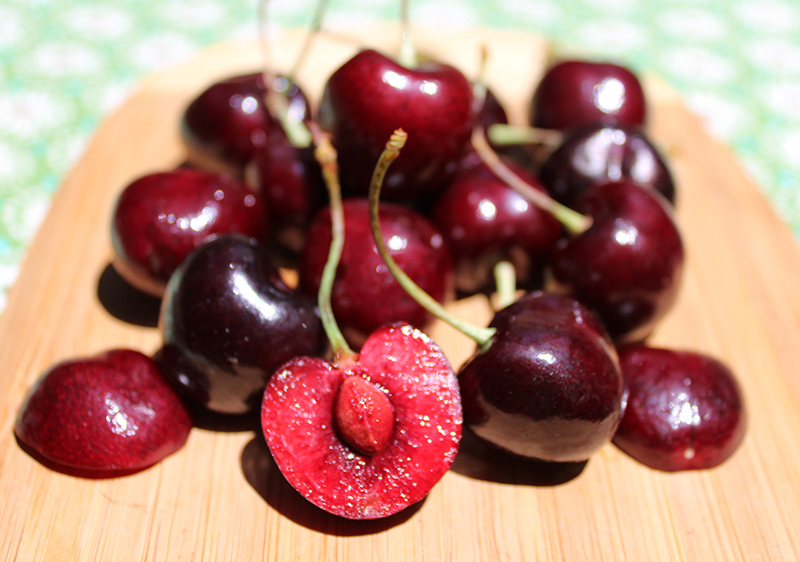
One of the most obvious benefits of sweet dark cherries is their taste. As a stone fruit, they are available on a seasonal basis in the summer months.
They do contain some mineral content, like iron and potassium, but their main attributes come from two things: FIBER and ANTIOXIDANTS. Their deep red pigmentation is an indication of their high ANTHOCYANIN content.
Cherries are also sources of VITAMIN C, other POLYPHENOLS and the CAROTENOIDS beta-carotene, lutein and zeaxanthin.
We personally don't eat them with other foods as they can cause digestive upset with improper food combinations.
However, when eaten alone as the first meal of the day, 8-10 cherries can be a great way to encourage AM bowel elimination as well as make a delicious energizing pre-workout breakfast food.
Some research on cherries from the sweet Prunus avium species indicates its antioxidative potential coming from its main phenolic compounds, like anthocyanin but also ferulic acid, gallic acid, quercetin, syringic acid and coumaric acids.
Ever since the very first studies on cherries in the 1950s, their consumption has been associated with gout-relieving qualities. (Source) Today, tart cherry juice and extracts are known to be especially concentrated for such purposes.
7) Oranges
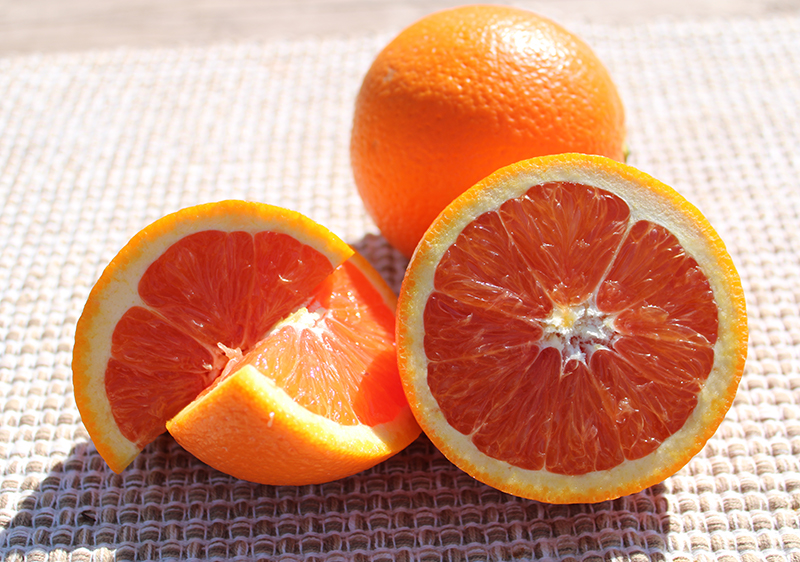
All types of oranges are highly valued as a source of VITAMIN C, containing more than most fruits aside from lemons and limes.
Vitamin C is an essential nutrient needed for many bodily functions. It's not only an immune-fostering antioxidant, but also necessary for collagen production which supports healthy tendons, eye tissues, ligaments, bones and joints. It is also required to absorb the mineral iron efficiently.
Compared to other fruits, oranges are one of the top food sources of antioxidants known as BIOFLAVONOIDS, particularly hesperidin and naringenin
Another benefit of oranges, being a citrus fruit, is that they contain powerful essential oils and acids like CITRIC ACID helpful for breaking up phlegm or dissolving excess mucus.
The sour taste of the fruit in combination with some of the bitter pith acts as a digestive aid to encourage the healthy flow of bile and helps to prevent constipation.
Oranges contain good amounts of CALCIUM and POTASSIUM as well as FOLATE and THIAMINE.
8) Blackberries
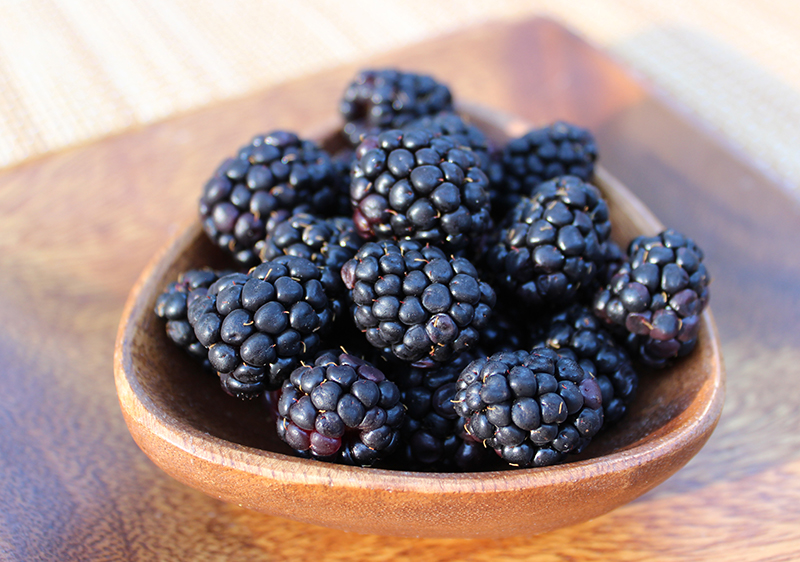
Blackberries are top on the list of common fruits high in CATECHINS as well as ELLAGITANNINS.
Other major health-supporting compounds present in dark purple blackberries are their ANTHOCYANINS, which act as both antioxidants and anti-inflammatory agents as shown in research.
Nutritional quality and the quantity of anthocyanin can vary depending on the maturity and ripeness of the fruit. Freshly harvested berries, in our opinion, can potentially contain a higher amount of these nutrients.
Blackberries are a very good source of VITAMIN C and can be a tasty fruit variety to add for increased daily uptake. A two-ounce serving of blackberries (or about 8 berries) offers approximately 11.8 mg of vitamin C or 20% of the Daily Value, based on a 2,000 calorie adult diet.
They also are rich in VITAMIN K, MANGANESE and COPPER as well as trace amounts of other vitamins and minerals.
In folk remedies, blackberries were often called "gout berries" as they were considered useful for reducing uric acid levels and gouty swelling of joints especially in the big toe.
9) Pomegranate
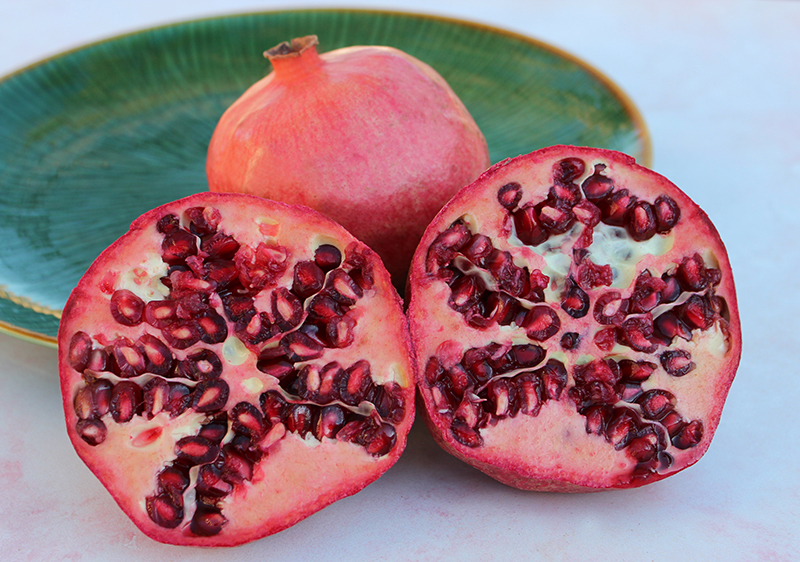
Pomegranates can be another healthy colorful fruit option to include in the diet. Like others on this list of common fruits, they are packed with ANTHOCYANIN, CATECHIN and PUNICALAGIN content. Again, these compounds help to protect against pathogens and fight inflammation in the body.
A good reason to consume the internal white seeds, as well as the juicy layer surrounding them, is that they are a source of PUNICIC ACID, a main active ingredient in pomegranate seed oil. (Source)
Punicic acid, along with polyphenolic antioxidants ellagic acid, caffeic acid and luteolin are the main substances in pomegranate juice studied for their proposed support to prostate function.
Pomegranate, and specifically its juice, is consequently believed to be a heart-healthy choice to consider adding to a balanced diet for its potential positive activity on blood pressure and cholesterol levels.
Whole seeds are high in COPPER, FOLATE, VITAMIN K, VITAMIN C and good amounts of other minerals and B-complex vitamins.
10) Dates
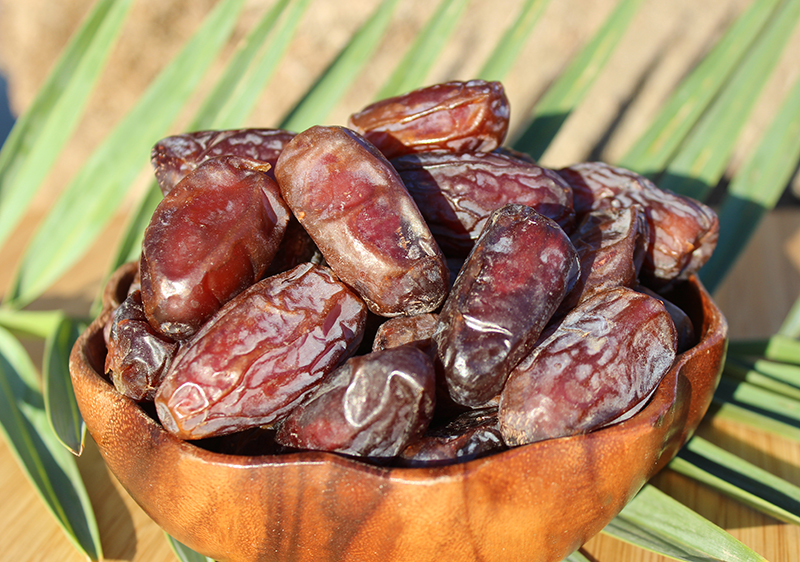
Date palm trees and their ripening fruits are essentially sunlight collectors, producing a concentrated highly condensed sugar source. Subsequently, dates are a very sweet fruit, predominantly composed of glucose, fructose and sucrose. Hence, they should be consumed in moderation.
They are delicious to eat straight or chopped up with avocado t, but can also be utilized in many types of blended shakes as well as dessert recipes.
Dates (like figs and prunes) with their high fiber content, encourage laxative effects that can help improve bowel regularity.
Generally, dates are sources of potassium, manganese, copper, magnesium, B6 and smaller amounts of other minerals and vitamins.
Precautions:
Generally speaking, this list of common fruits are safe to consume for most individuals. However, you may want to seek the advice of your healthcare professional before eating them on a frequent basis if you are on a low-sugar diet, pregnant, nursing, taking prescribed medication or if you have a serious medical condition.
